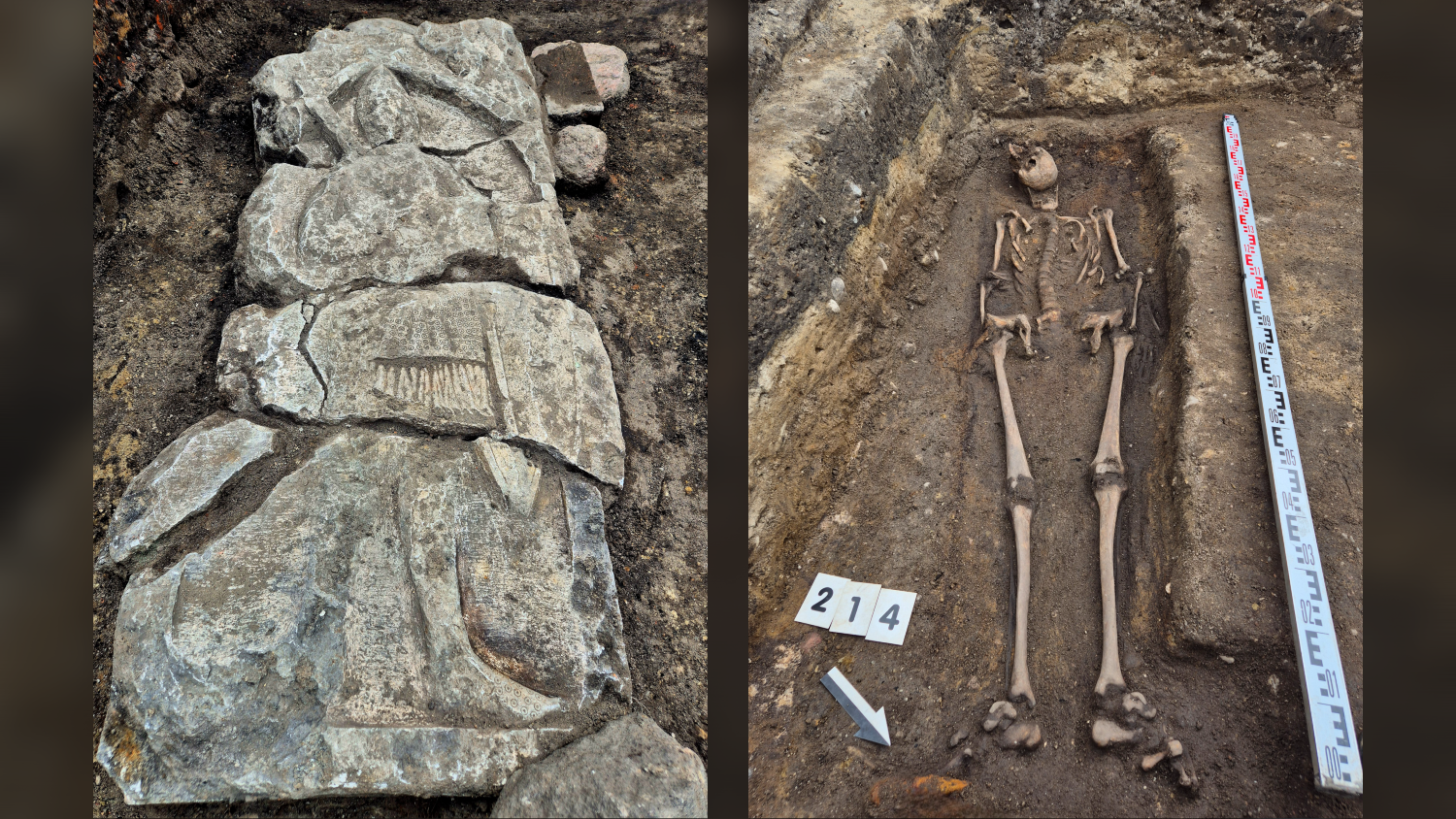Archaeologists were surprised to discover the exceptional tomb of a medieval knight underneath an ice cream shop in the seaside Polish city of Gdańsk. The 13th-century burial includes a rare carving that probably depicts the knight himself.
“We discovered a large limestone tomb slab carved with the image of a knight in full chainmail armor,” Sylwia Kurzyńska, an archaeologist with ArcheoScan who co-directed the excavation, told Live Science in an email. The carved slab is rare in medieval Poland because “only a few featured images of the deceased,” she said.
Kurzyńska and her team found the monument in the historic center of Gdańsk in July, when they were excavating the grounds of a stronghold used from the 11th to the 14th centuries. Within the stronghold were the remains of a castle, a church and a cemetery.
The carved tombstone has been preliminarily dated to the late 13th or early 14th century, Kurzyńska said. Roughly 59 inches (150 centimeters) long and made out of limestone imported from Gotland, Sweden, the slab shows a man standing upright in full armor and holding a sword and a shield.
“Given that it was made out of soft limestone and lay buried for centuries,” Kurzyńska said, “the preservation of the slab is remarkable — the carving, the armor and the shield are still well-defined.”
Shortly after their discovery of the slab, the ArcheoScan team removed the stone and dug deeper. They found a well-preserved male skeleton but no grave goods.
Related: 600-year-old amethyst ‘worthy of a duke’ found in medieval castle moat in Poland
“All evidence suggests that the person commemorated was of high social standing, most likely a knight or someone holding a military function,” Kurzyńska said. Although the date and location of this burial coincide with the rise of the Teutonic Knights, researchers found no inscriptions or symbols to definitively link him to that order.
The discovery is an important one in Gdańsk, Kurzyńska said, as it represents “a direct link to the city’s formative years, offering a rare glimpse into the lives and burials of its medieval elite.”
Additional work on both the tomb slab and the skeleton is already underway. Researchers are documenting the slab using high-resolution 3D scanning, with the aim of reconstructing and preserving the unique carving. In addition, a chemical and genetic analysis of the bones will help them better understand who this man was and what his life was like.
“We also plan to create a facial reconstruction based on the skull,” Kurzyńska said, to figure out what the knight, which the public has dubbed the “Gdańsk Lancelot,” may have looked like in life.
